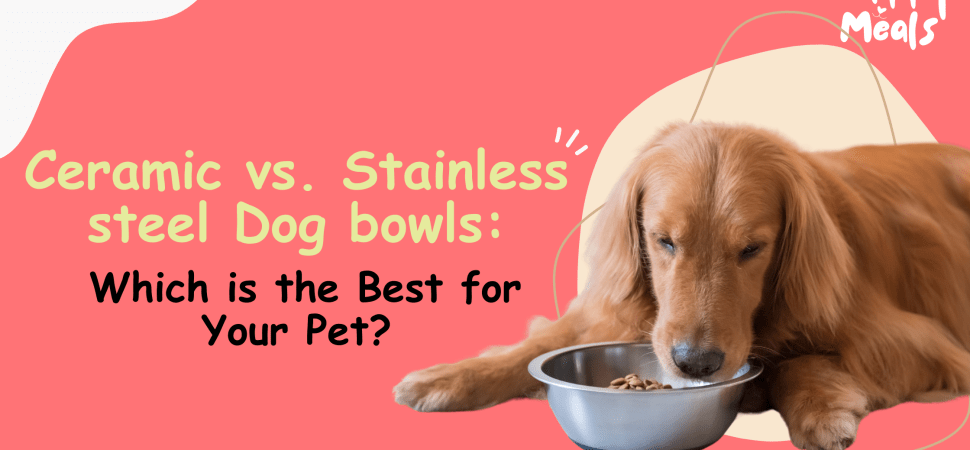
Choosing the ideal bowl for your beloved pet can take time and effort, especially when torn between ceramic and stainless steel options. Sniffy Meals will break down the pros and cons of each to help you make the best choice for your pet.
Ceramic Bowl
Emily Pets Ceramic

Click now to buy Emily Pets Ceramic on Amazon and enjoy unbeatable deals.
Stainless Steel Bowl
Emily Pets Stainless Steel

Click now to buy Emily Pets Stainless Steel on Amazon and enjoy unbeatable deals.
Ceramic Dog Bowls:
Pros:
- Aesthetic Appeal: Ceramic bowls come in various colors and designs.
- Gentle on Faces: Smooth surfaces are easy on your dog’s face and nose during meals.
- Customizable: Personalize with your dog’s name or unique designs.
- Non-Slip: Generally quiet and non-slip when placed on the floor.
- Easy to Clean: Stain-resistant, non-absorbent, and dishwasher-safe.
Cons:
- Fragile: If dropped, it can crack, chip, or shatter.
- Staining: Prone to staining from colored foods.
- Bacterial Traps: Unglazed clay may trap bacteria if not cleaned frequently.
- Not for Outdoor Use: Earthenware needs durability for outdoor use.
- Heavier: Heavier than stainless steel or plastic bowls.
- Cost: Generally, it is more expensive than stainless steel.
Stainless Steel Dog Bowls:
Pros:
- Durability: Extremely durable, stands up well to rough handling.
- Rust-Resistant: Ideal for both indoor and outdoor use.
- Easy to Clean: The non-porous surface is dishwasher-safe and does not trap food or bacteria.
- Lightweight: Portable and suitable for travel.
- Variety of Sizes: Available in various sizes
- Cost-Effective: Often less expensive than ceramic.
Cons:
- Noisy: Can be noisy on hard surfaces, potentially disturbing some dogs.
- Limited Styles: Less variety in styles and decorative designs compared to ceramic.
- Metallic Smell: Some dogs may dislike the metallic smell or taste.
- Scratches Over Time: Prone to showing scratches, scuffs, and dents with rough use.
- Heavier: Heavier than some materials if portability is a concern.
Conclusion:
Consider your dog’s size, habits, and any specific needs. If you’re looking for a charming and personalized bowl for indoor use, ceramic might be the way to go. For durability, ease of cleaning, and outdoor use, stainless steel could be the better fit. Ultimately, both materials have their merits, and your choice depends on your pet’s preferences and your lifestyle.
Leave Your Comment
You must be logged in to post a comment.



